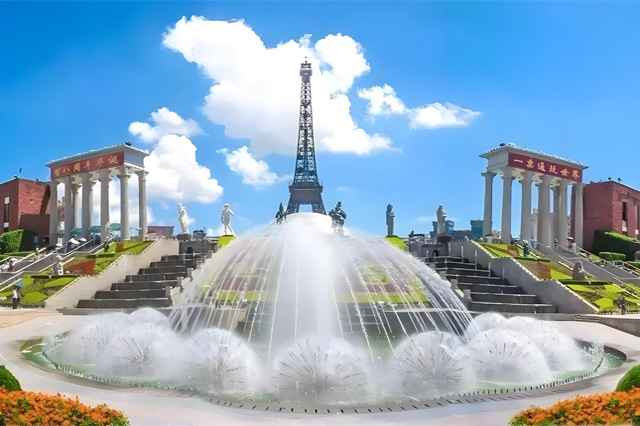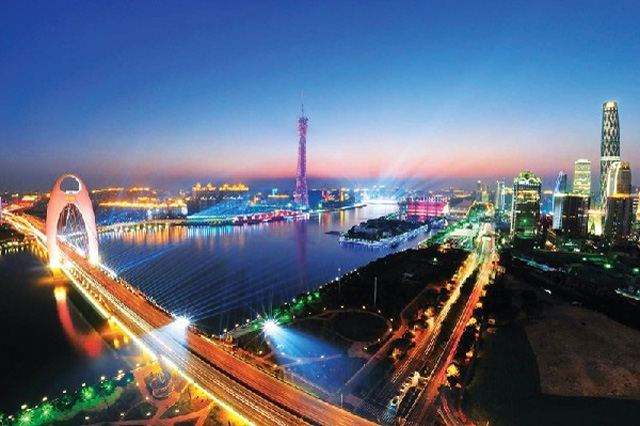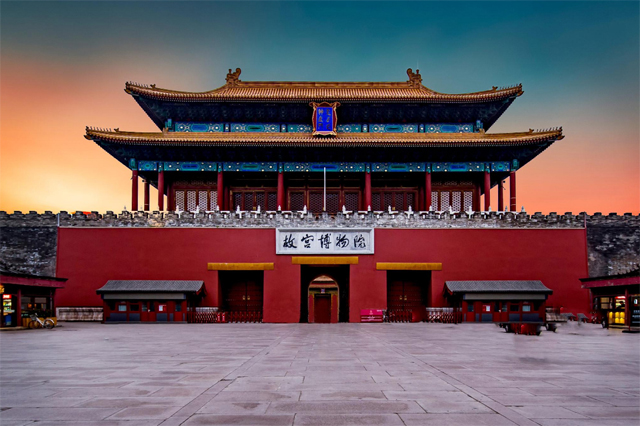Xinjiang 5A tourist attractions summary, take you to play the western regions!
- China Tourism
- 2025-08-08 15:05
- 92
Xinjiang Uygur Autonomous Region, referred to as "Xin", is the largest provincial administrative region in China, accounting for about 1/6 of China's total land area. Xinjiang was called "Western Regions" in ancient times, which means the western territory of China. It has been an inseparable part of China since ancient times. Xinjiang has a long history and splendid culture. There are many relics along the ancient Silk Road. The cultures of various ethnic groups are competing for splendor. It is a gathering place of the four major civilizations in the world. China's "Xinjiang Tianshan" has been included in the UNESCO World Natural Heritage List. Next, I will give you a summary of Xinjiang 5A tourist attractions and take you to the western regions!
1. Tianshan Tianchi Scenic Area, Changji Hui Autonomous Prefecture

The Tianshan Tianchi Scenic Area in Changji Hui Autonomous Prefecture is located on the hillside of Bogda Peak in Fukang City, Changji Hui Autonomous Prefecture, Xinjiang Uygur Autonomous Region. It is the first batch of national scenic spots and national AAAAA-level tourist attractions. It is included in the UNESCO World Heritage List. Tianchi, known as Yaochi, Shenchi and Longtan in ancient times, is the main scenic spot, Xiaotianchi, Dengzhan Mountain, the tourist area on the north slope of Tianchi, Liquan Cave and so on. There are national key protected animals in the scenic area, such as snow leopard, northern goat, argali, dark-bellied snow chicken, red deer, etc.
2. Grape Valley Scenic Area, Turpan

Grape Valley Scenic Area in Turpan City, located on the northeast side of the intersection of Jingxin Expressway and Z474 in Gaochang District, Turpan City, Xinjiang Uygur Autonomous Region, is a valley in Turpan City, named after its rich grapes. The local Uighurs call it "Bouyruk", which means "a place with many and good grapes". During the Southern and Northern Dynasties, Turpan has become an important grape growing area. According to a grape vine unearthed from the ancient tomb of Yanghai, the local grape cultivation history is more than 3000 years. Grape Valley is arranged from north to south in five tourist areas: Grape Valley Amusement Park, Wang Luobin Music Art Museum, Dawazi Folk Custom Garden, Awati Amusement Park and Vineyard.
3. Kanas Scenic Area in Altay Region

The Kanas Scenic Area in Altay Region is located in the middle of the Altai Mountains in Xinjiang Uygur Autonomous Region. It mainly includes Hanas National Nature Reserve, Kanas National Geopark, Baihaba National Forest Park, Jadengyu National Forest Park, Kanas River Valley, Hemu River Valley, Hemu Grassland, Naren Grassland and Hemu Village, Baihaba Village, Kanas Village and other three primitive Tuva natural landscape areas and three cultural landscape areas, it is a comprehensive eco-tourism area integrating glaciers, snowfields, mountains, rivers, lakes, forests, grasslands and other natural landscapes.
4. Nalati Tourist Scenic Area, Yili Kazakh Autonomous Prefecture

Nalati tourist scenic spot of Yili Kazakh Autonomous Prefecture is located in Xinyuan County, Yili Kazakh Autonomous Prefecture, Xinjiang Uygur Autonomous Region. It is composed of alpine grassland sightseeing area, Kazakh folk customs area and tourist living area from south to north. Nalati tourist scenic spot integrates grasslands, valleys and forests, with high vegetation coverage and rich wildlife resources. Because of its unique natural ecological landscape and cultural landscape, it is known as "Tianshan Green Island", "Green Home" and "colorful grassland". The main attractions are Celestial Terrace, Nomads, Tawusani, Tiansendai, Volta Tower Observation Deck, Snow Lotus Valley and so on.
5. Hokotuo Sea Scenic Area in Altay Region

The Keketuo Sea Scenic Area in Altay Region is located in Fuyun County, Altay Region, Xinjiang Uygur Autonomous Region. It is an international original ecological tourist attraction integrating beautiful canyon river source scenery, marsh wetland landscape, cold lakes, unique landforms and other natural scenery. The name of the Keketuo Sea Scenic Area comes from Kazakh and Mongolian, which means "green jungle" in Kazakh and "blue river bay" in Mongolian ". The Keketuohai scenic spot consists of five scenic spots: Erzis Grand Canyon, No.3 Mine, Sayyihengbulak, Coco Suri and Karasengal. The main scenic spots include Iremu Lake, Longmen Square, Birch Forest, etc.
6. Xinjiang Jinhu Yang National Forest Park

Xinjiang Jinhu Yang National Forest Park is located in the southwest of Zepu County, Kashgar Prefecture, Xinjiang Uygur Autonomous Region. It is a national forest park with functions of ecological protection, popular science education, forest health and cultural inheritance. Jinhu Yang National Forest Park is the first national forest park in Xinjiang, famous for its unique natural Populus euphratica forest landscape and desert oasis ecology.
7. Urumqi Tianshan Grand Canyon Scenic Area

Urumqi Tianshan Grand Canyon Scenic Area is located in Banfanggou Town, Urumqi County, Urumqi City, Xinjiang Uygur Autonomous Region. It includes all the natural landscapes in Xinjiang except the desert. It has Tianshanba Leisure Area, Zhaobi Mountain Holiday Recreation Area, Gasdaban Sightseeing Area, Swan Lake Natural Scenic Area, Niumao Lake Forest Sea Songtao Sightseeing Area, Kazakh Ethnic Customs Park, Alpine Grassland Ecological Area, Alpine Mountain and Glacier Mountain Ecological Area. The Tianshan Grand Canyon Scenic spot in Urumqi is favored by tourists for its "strange pines, strange rocks and sea of clouds", leaving behind the praise of "the return of the five mountains does not look at the mountains, the return of the Grand Canyon often recalls the Valley" and "the hundred-li Golden Tourism Corridor, outdoor paradise for leisure and vacation.
8. Bayingoleng Mongolia Autonomous Prefecture Bosten Lake Scenic Area

The Bosten Lake Scenic Area of Bayingoleng Mongolian Autonomous Prefecture is located in Bohu Town, Bohu County, Bayingoleng Mongolian Autonomous Prefecture, Xinjiang Uygur Autonomous Region. It is a natural lake water scenic spot. Bosten Lake, the full name of Bosten Nur in Mongolian, translates to "standing". It is named after the three lakes standing in the lake. It was called "Xihai" in ancient times. It is located in the Yanqi Basin and is the largest inland freshwater lake in China. Bosten Lake scenic area is mainly based on Bosten Lake scenery, which is composed of Dahekou scenic area and Lianhai world scenic area. Bosten Lake and snow-capped mountains, lakes, oases, deserts, birds, and exotic animals live together and flourish together, set off each other, forming a rich and colorful landscape painting scroll.
9. Kashgar Ancient City Scenic Area in Kashgar

Kashgar Ancient City Scenic Area, located in Kashgar City, Kashgar Prefecture, Xinjiang Uygur Autonomous Region, is a national AAAAA-level tourist attraction. After more than 2000 years of wind, frost, snow and rain, the ancient city of Kashgar has become a specimen and slice of different historical periods. It is known as a living fossil for the study of ancient Western cities, and it is also the most valuable, influential and influential study of ancient Silk Road culture. A representative historical and cultural city. The ancient city is an open tourist attraction and a living area for Uyghur residents. It shows the family life, ethnic customs, traditional handicrafts and delicious food of Uyghur residents.
10. Yili Kazak Autonomous Prefecture Karajun Scenic Area

The Kalajun Scenic Area of Yili Kazakh Autonomous Prefecture, also known as the Kalajun International Eco-tourism Area, is located in Teks County, Yili Kazakh Autonomous Prefecture, Xinjiang Uygur Autonomous Region. It is composed of Kuo Kesu Grand Canyon, Xikarajun, Dongkarajun, and Middle Tianshan Snow Peak and Tianlai Forest. As an important part of the world natural heritage of "Xinjiang Tianshan", Karajun scenic spot is an area with rich biodiversity and high aesthetic value in Tianshan, Xinjiang. The main scenic spots in Xikara are expected to be Yutai, marmot habitat, two platforms, stacked wave valley, Shiquan, drinking horse bay, a tree and other attractions.
11. Bayinbuluke Scenic Area, Bayingoleng Mongolian Autonomous Prefecture

Bayingoleng Mongolian Autonomous Prefecture Bayinbuluke Scenic Area, located in Hejing County, Bayingoleng Mongolian Autonomous Prefecture, Xinjiang Uygur Autonomous Region, is a high-level large-scale mountain basin in Tianshan with alpine meadow grassland and alpine marsh wetland ecosystem as the background, with the upper reaches of the Kaidu River, Marsh wetland as the main body, to create a natural landscape tourism area. Known as the "green pure land", it is the country's largest subalpine alpine meadow grassland location. Bayinbuluk Grassland Scenic Area has ecological landscapes such as snow-capped mountains, canyons, basins, grasslands, river curves, wetlands, etc., as well as cultural characteristics such as Mongolian customs, Donggui culture, and grassland culture. Its main attractions include Tuerhute Folk Culture Village, Swan Lake, Jiuqu Eighteen Bends, Grassland Love, Barunkure, etc.
12. Kashgar Pamir Tourist Area

The Pamir Tourist Area in Kashgar Prefecture is located in the Tashkurgan Tajik Autonomous County of Kashgar Prefecture, Xinjiang Uygur Autonomous Region. It consists of five major areas: Stone City Scenic Area, Golden Grass Beach, Tajik Folk Village, Comprehensive Service Center, and Tourist Shopping Center. Pamir tourist area is an open and comprehensive landscape corridor tourist area with Tajik folk customs, Pamir plateau landscape, Silk Road cultural relics and red frontier as the main body. It has 41 kinds of natural and cultural tourism resources, such as mountains, glaciers, river valleys, wetlands, ancient castles, intangible cultural heritage, folk customs and characteristic souvenirs, It is a high quality tourism destination integrating sightseeing, exploration, culture and scientific research activities.
13. Karamay City World Devil City Scenic Area

Karamay City World Devil City Scenic Area is a Yadan landform scenic tourist attraction located in Karamay City, Xinjiang Uygur Autonomous Region. In the Cretaceous period of about 0.1 billion years ago, Karamay World Devil City Scenic Area was a huge freshwater lake with plants growing. The water was inhabited and bred by Wuerhe stegosaurus, plesiosaurus and other ancient animals. Later, after two major crustal changes, the lake became a vast sea of land sandwiched with sandstone and mudstone, which is called "Gobi platform" in geology ". It integrates natural landscapes such as desert canyons, stone beaches, poplars, natural asphalt, sunrise clouds, mirages, etc., and has tourism resources such as rock Yadan and natural asphalt veins, such as oil field experience areas, which is the origin of Xinjiang golden silk jade, a treasure of the Silk Road.
14. Sailimu Lake Scenic Area, Bortala Mongolian Autonomous Prefecture

The Sailimu Lake Scenic Area of Bortala Mongolian Autonomous Prefecture is located in Bole City, Bortala Mongolian Autonomous Prefecture, Xinjiang Uygur Autonomous Region. It is a collection of mountains, lakes, forests, grasses, wetlands, glaciers and other original ecological landscapes, with ethnic customs Scenic spots. Sailimu Lake is called "Sailimunur" in Mongolian, which means "the lake on the ridge of the mountain". It integrates high mountains, glaciers, forests, grasslands, blue lakes and rare birds, and integrates male, strange, secluded, beautiful and open. It is the highest altitude and largest mountain lake in Xinjiang, enjoying the reputation of "the foreign land from the west, the spiritual soil outside the world.
15. No.10 Division Baisha Lake Scenic Area

The 10th Division Baisha Lake Scenic Area is located in the third company of the 185th Regiment of the 10th Division of the Xinjiang Production and Construction Corps. The scenic spots include Baisha Lake, Mingsha Mountain, Eye Mountain, 185 Regiment Flood Fighting and Soil Conservation Monument, and the first company of the Northwest Border. Cultural attractions. Baisha Lake is a small desert lake surrounded by sand dunes, with tall and dense mixed forests and dense clusters of reeds growing in the center, shores and around the lake. Baisha Lake is surrounded by sand on all sides. It is named "Baisha Lake" because of the yellow and white sand grains of the sand dunes on the lakeside. It is known as the "Desert Holy Spring". It is a freshwater lake north of the Gurbantunggut Desert, the second largest desert in China.
16. Alar Taklimakan 359 Brigade Cultural Tourism Zone

The Taklimakan 359 Brigade Cultural Tourism Zone in Alar City is located in Alar City, the first Division of Xinjiang production and Construction Corps. It is composed of the 359 Brigade Cultural Tourism area and the Taklimakan Desert Gate Scenic spot, connecting the red culture of reclamation and the natural scenery of the desert. There are not only the 359 Tour Tun Reclamation Memorial Hall, Tun Reclamation Cultural Park, Shanghai Educated Youth Memorial Forest, etc., which can be visited statically, but also the "359 Tour is a model" real-life performing arts base, which can carry out dynamic experience, and can also go to the desert gate scenic spot to experience various desert play projects.
17. Changji Hui Autonomous Prefecture Jiangbulak Scenic Area

The Jiangbulak Scenic Area of Changji Hui Autonomous Prefecture is located in Banjiegou Town, Qitai County, Changji Hui Autonomous Prefecture, Xinjiang Uygur Autonomous Region. It is a perfect combination of a typical temperate arid zone mountain vertical comprehensive landscape and unique mountain wheat field prints. It is a continuation of the Tianshan World Natural Heritage in Xinjiang. The landscape has been identified by the Chinese Academy of Sciences as one of the most complete and earliest oasis cultures to be protected. The scenic area consists of five areas of 18 scenic spots, including the strange slope of Tianshan Mountain, 10,000 mu of wheat fields, Han Shule City, wooden plank road and black waterlogging dam. The scenic spot has huge resources and rich varieties. It has formed nine major cultures such as farming culture, border defense culture, and nomadic culture as the foundation, with sightseeing photography, leisure vacation, scientific research, popular science education, hiking adventure, health and fitness as the main functions. The characteristic, high-quality, and compound international leisure and vacation tourist attractions are one of the cores of Xinjiang's "Tianshan · Qianli Golden Line.
18. Aksu Prefecture Tianshan Tomur Scenic Area

Aksu Tianshan Tomur Scenic Area, located in Wensu County, Aksu Prefecture, Xinjiang Uygur Autonomous Region, is a national AAAAA-level tourist attraction. Tianshan Tomur Scenic Area is located at the foot of Tomur Peak, the highest peak of Tianshan Mountain, with a total area of 7.52 million square meters. It is composed of the Grand Canyon with World Natural Heritage sightseeing and exploration as the core, the Tacun village with rural tourism as the core, and the world intangible cultural heritage Manas cultural exhibition and exhibition as the core.
This article is edited and published by Journey Mark. If you have any questions, please feel free to contact us at any time.
Article Link:https://www.topvvv.com/en/China/132.html



